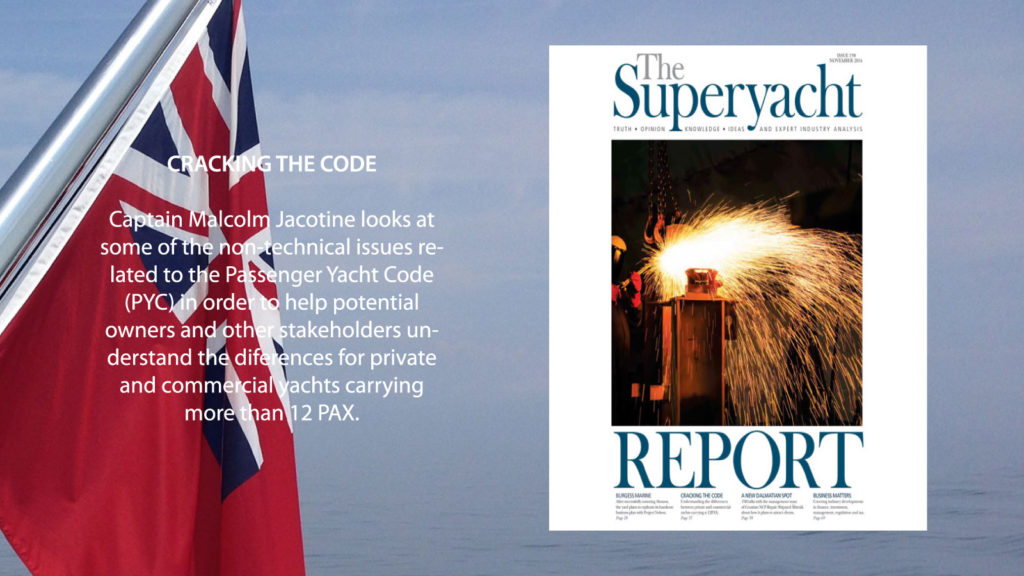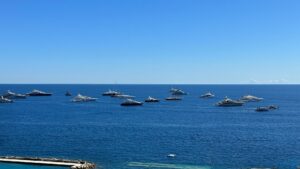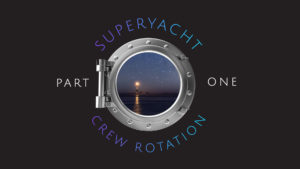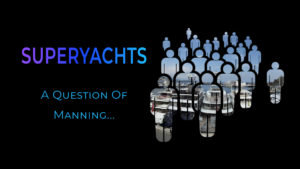It’s almost a year since I wrote the article in The Superyacht Report Issue 158 (a copy can be found on my Linkedin Profile page or via this link http://www.slideshare.net/MalcolmJacotine/tsr-issue-158-cracking-the-code) and since that time there have been a number of yachts launched built to the Passenger Yacht Code (PYC) and according to some sources there are currently 20+ PYC projects.
One thing that seems evident from the recent launches is that there has perhaps not been sufficient consideration to the manning of these yachts and some of them are struggling with the crew numbers and manning requirements necessary to comply with the Code whilst at the same time providing the high level of safety and service across all departments expected by the Owner. As an example of the potential difficulties one such vessel switched to LY3 citing manning issues as one reason – although how they will still be able to carry more than 12 PAX on a sea going voyage may be a point of contention.
This is not just because the Code requires full STCW commercial Certificates of Competence, but also because the Safe Manning requires a larger number of deck officers, engineering officers and deck/engineering ratings than an equivalent LY3 yacht, which in turn has a knock-on effect on the hotel complement.
Compared to an LY3 a PYC yacht has the potential to carry more guests, a greater volume of interior space, more technical demands, increased deck and exterior spaces to maintain, extra tenders/toys and guest services, higher hotel service demands, and have more regulated operational requirements, yet many of these yachts are built to carry the same crew numbers as an LY3 yacht of a similar size – this does not make sense.
Perhaps this is no surprise as PYC is relatively new and the experience of operating these yachts limited. Indeed, even though I was a very experienced yacht Captain when I joined Eclipse I confess I was ill prepared for the differences between an LY3 yacht and a SOLAS Passenger Ship – operationally similar to PYC. It was a steep learning curve though thankfully there were some great crew who supported and helped me understand and transition the many differences.
I believe that in order to avoid this and other issues related to the operation of a PYC yacht, a more considered and collaborative approach should be taken between all stakeholders – we must share ideas, discuss experiences and develop solutions to ensure the success these projects and their future operation. Involving experienced operational crew such as Captains, Chief Engineers and Chief Stewardesses in the process will be key and not just limited to this issue of ensuring there are sufficient crew to safely man the yacht and meet the operational profile and expectations of the Owner.
And whilst there is no doubt that crew space can be considered expensive ‘real-estate’ on a yacht with the inevitable compromise in this area, perhaps it is better to have a few spare berths during low peak periods than the Owners experience compromised due to lack of crew during the high peak periods?
The quality of the onboard experience will be crucial to the Owner and his guests, therefore the proper manning of these yachts should be carefully explained as one of the many consequential realities of owning and operating a vessel of this size and I believe it is incumbent on all of us in the Superyacht Industry to get right.









